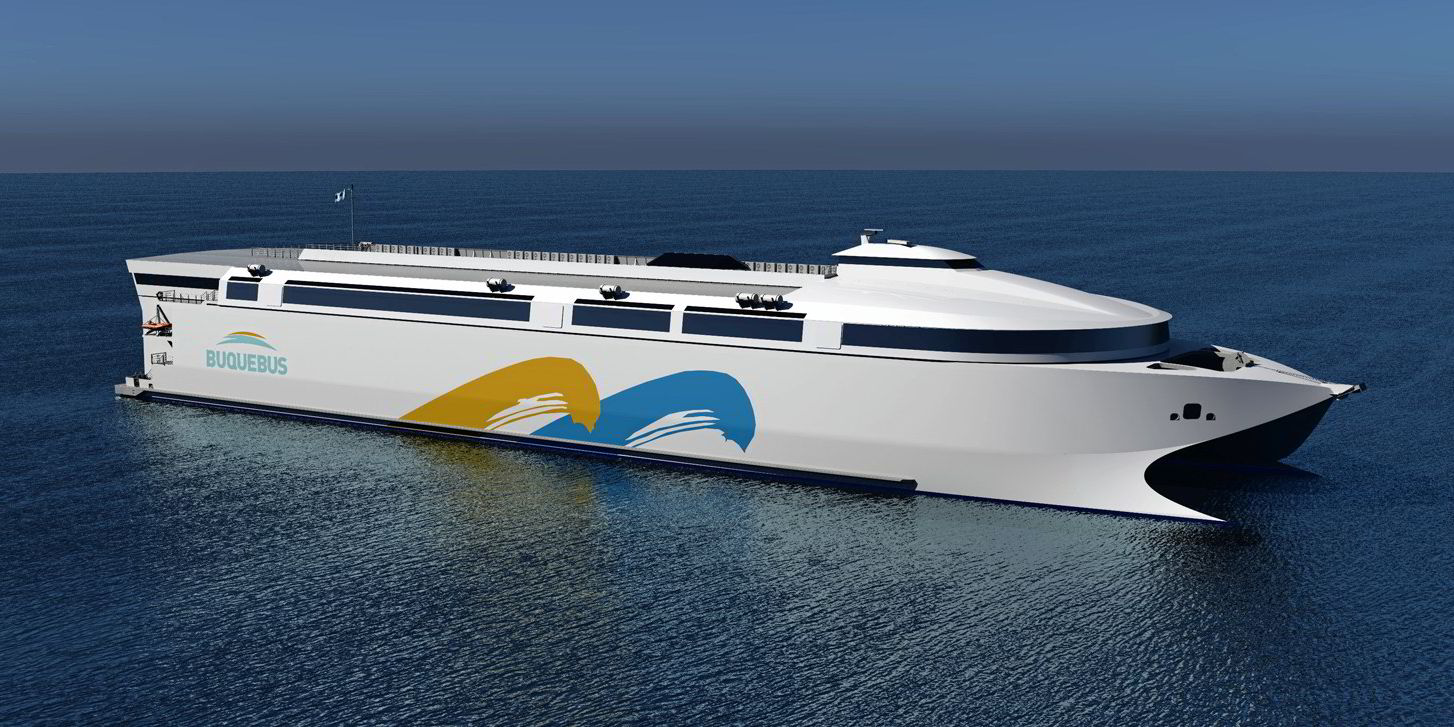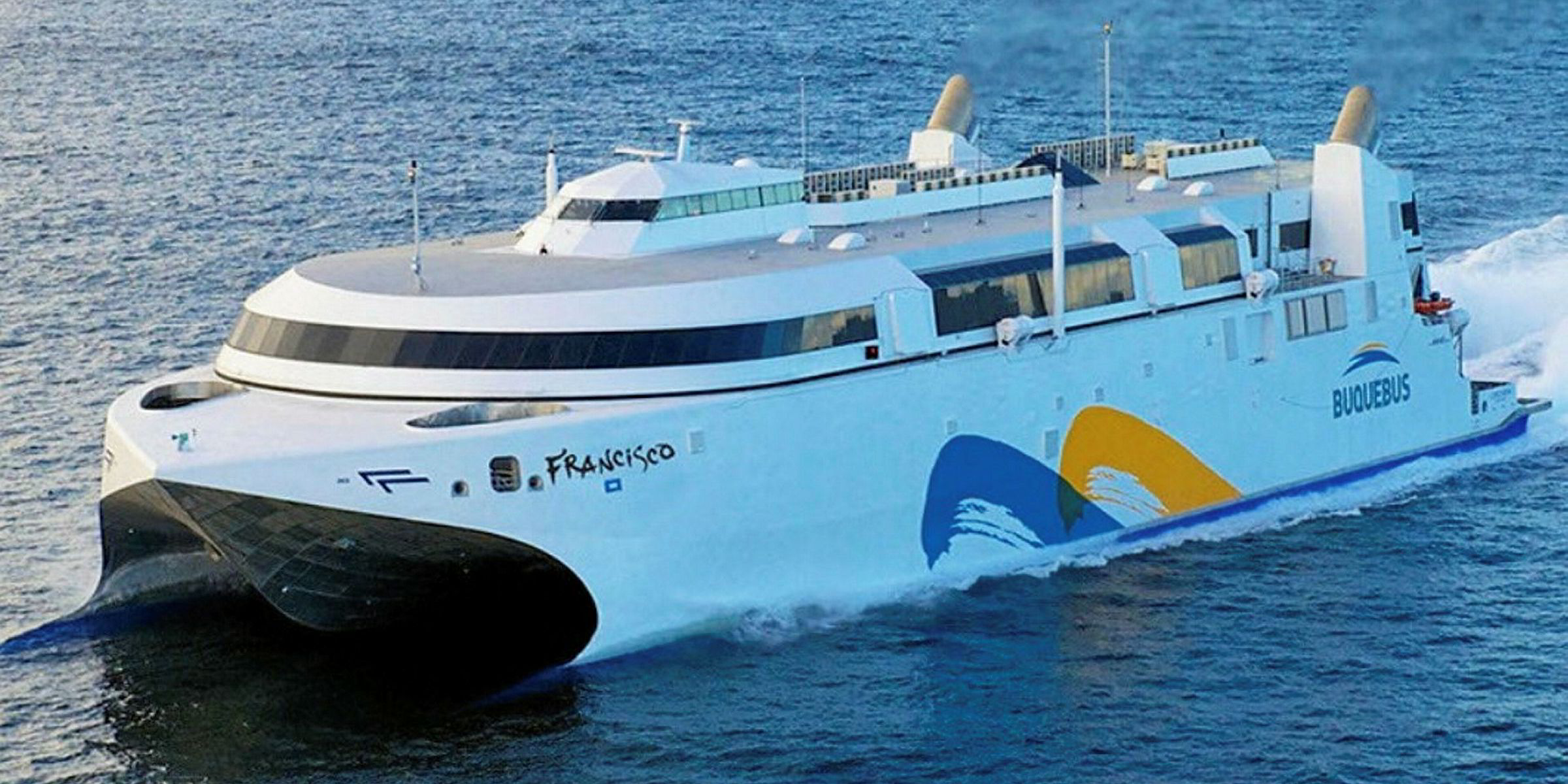Argentine operator Buquebus is seeking to have the largest zero-emissions ferry after asking builder Incat Tasmania to switch its order for an LNG-fuelled vessel to an all-electric battery-powered design.
The Australian shipyard said recent consultations with Buquebus had led to Incat being “asked to investigate the possibility of replacing the LNG powerplant with a battery-electric solution”.
The 130-metre aluminium-built ropax, originally intended to be powered by LNG, will carry 2,100 passengers and 226 vehicles when delivered in 2025. It was ordered in 2019 for about $130m.
Incat said challenges need to be overcome but the 13,000-gt battery electric vessel “would be the world’s largest, lightweight, zero emissions ferry operating on any route in the world”.
Group chairman and founder of Incat Robert Clifford said: “The customer wants this to happen, Incat wants this to happen, and whilst there are matters to be finalised, I am extremely confident that Incat can deliver this ground-breaking ship.
“In my experience, unless we see something come in from left field, this is a ‘done deal’.”
The ship is intended to operate on Buquebus’ routes between Argentina and Uruguay and Clifford said it understands that there will be sufficient energy supply in the ports the ship would visit.
Battery and electric motor requirements are being worked out with suppliers to ensure the technology can be delivered required in the timeframe needed, he added.
Former Tasmanian Premier who is a strategic adviser for Incat, Peter Gutwein said delivering the world’s first large battery electric ferry for Buquebus would lead to exponential growth in the international market for large lightweight electric ships. Aluminium is lighter than steel.
“The world wants large, lightweight zero-emission ships and we are already scaling up our workforce and production facility in readiness for what will be a significant expansion,” he said.
The ferry, which will be the ninth ship Incat has built for Buquebus, was originally set to be powered by four LNG burning engines at speeds up to more than 40 knots and delivered by late this year.





